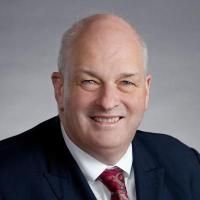Outcomes of Surgical Treatment for 138 Patients With Severe Sagittal Deformity at a Minimum 2-Year Follow-up: A Case Series.
Date
2021-08
Journal Title
Journal ISSN
Volume Title
Repository Usage Stats
views
downloads
Citation Stats
Abstract
Background
Operative treatment of adult spinal deformity (ASD) can be very challenging with high complication rates. It is well established that patients benefit from such treatment; however, the surgical outcomes for patients with severe sagittal deformity have not been reported.Objective
To report the outcomes of patients undergoing surgical correction for severe sagittal deformity.Methods
Retrospective review of a prospective, multicenter ASD database. Inclusion criteria: operative patients age ≥18, sagittal vertical axis (SVA) ≥15 cm, mismatch between pelvic incidence and lumbar lordosis (PI-LL) ≥30°, and/or lumbar kyphosis ≥5° with minimum 2 yr follow-up. Health-related quality of life (HRQOL) scores including minimal clinically important difference (MCID)/substantial clinical benefit (SCB), sagittal and coronal radiographic values, demographic, frailty, surgical, and complication data were collected. Comparisons between 2 yr postoperative and baseline HRQOL/radiographic data were made. P < .05 was significant.Results
A total of 138 patients were included from 502 operative patients (54.3% Female, Average (Avg) age 63.3 ± 11.5 yr). Avg operating room (OR) time 386.2 ± 136.5 min, estimated blood loss (EBL) 1829.8 ± 1474.6 cc. A total of 71(51.4%) had prior fusion. A total of 89.9% were posterior fusion only. Mean posterior levels fused 11.5 ± 4.1. A total of 44.9% had a 3-column osteotomy. All 2 yr postoperative radiographic parameters were significantly improved compared to baseline (P < .001 for all). All 2yr HRQOL measures were significantly improved compared to baseline (P < .004 for all). A total of 46.6% to 73.8% of patients met either MCID/SCB for all HRQOL. A total of 74.6% of patients had at least 1 complication, 11.6% had 4 or more complications, 33.3% had minimum 1 major complication, and 42(30.4%) had a postop revision.Conclusion
Patients with severe sagittal malalignment benefit from surgical correction at 2 yr postoperative both radiographically and clinically despite having a high complication rate.Type
Department
Description
Provenance
Subjects
Citation
Permalink
Published Version (Please cite this version)
Publication Info
Scheer, Justin K, Lawrence G Lenke, Justin S Smith, Darryl Lau, Peter G Passias, Han Jo Kim, Shay Bess, Themistocles S Protopsaltis, et al. (2021). Outcomes of Surgical Treatment for 138 Patients With Severe Sagittal Deformity at a Minimum 2-Year Follow-up: A Case Series. Operative neurosurgery (Hagerstown, Md.), 21(3). pp. 94–103. 10.1093/ons/opab153 Retrieved from https://hdl.handle.net/10161/28078.
This is constructed from limited available data and may be imprecise. To cite this article, please review & use the official citation provided by the journal.
Collections
Scholars@Duke

Christopher Ignatius Shaffrey
I have more than 25 years of experience treating patients of all ages with spinal disorders. I have had an interest in the management of spinal disorders since starting my medical education. I performed residencies in both orthopaedic surgery and neurosurgery to gain a comprehensive understanding of the entire range of spinal disorders. My goal has been to find innovative ways to manage the range of spinal conditions, straightforward to complex. I have a focus on managing patients with complex spinal disorders. My patient evaluation and management philosophy is to provide engaged, compassionate care that focuses on providing the simplest and least aggressive treatment option for a particular condition. In many cases, non-operative treatment options exist to improve a patient’s symptoms. I have been actively engaged in clinical research to find the best ways to manage spinal disorders in order to achieve better results with fewer complications.
Unless otherwise indicated, scholarly articles published by Duke faculty members are made available here with a CC-BY-NC (Creative Commons Attribution Non-Commercial) license, as enabled by the Duke Open Access Policy. If you wish to use the materials in ways not already permitted under CC-BY-NC, please consult the copyright owner. Other materials are made available here through the author’s grant of a non-exclusive license to make their work openly accessible.
